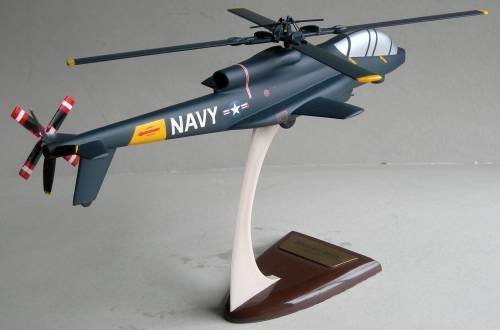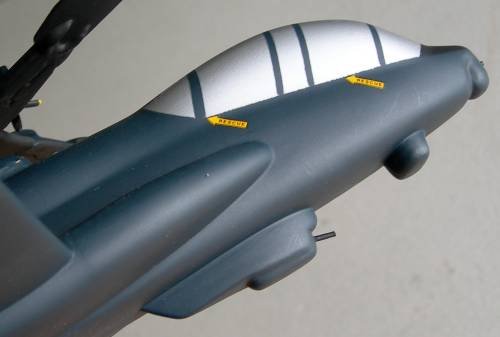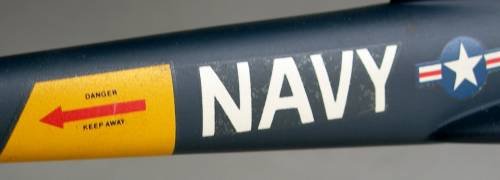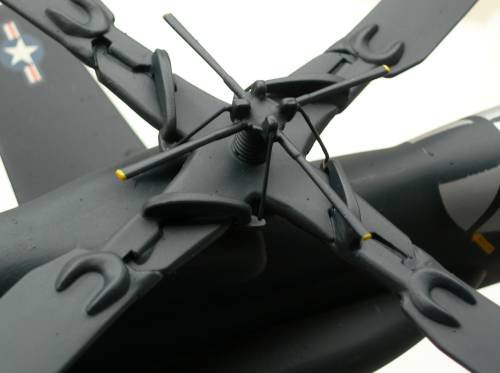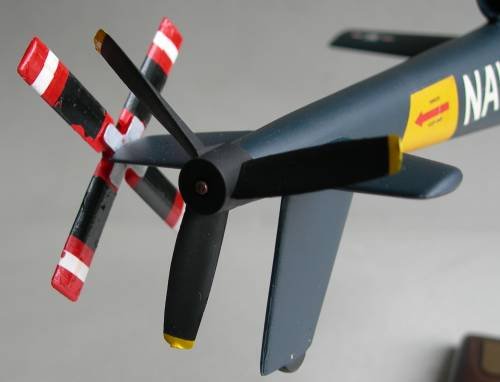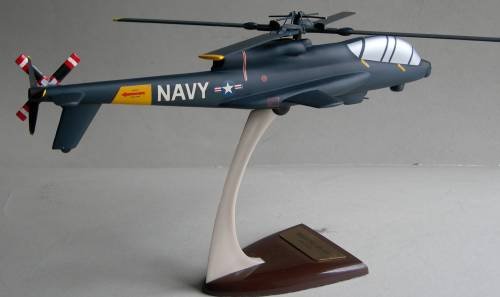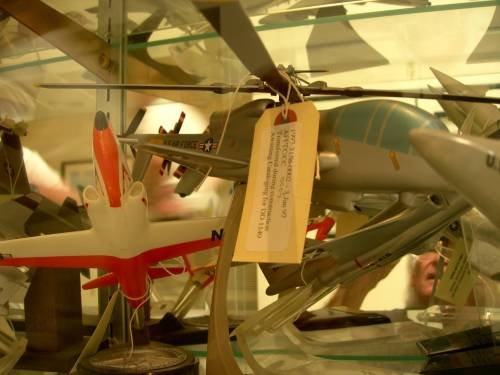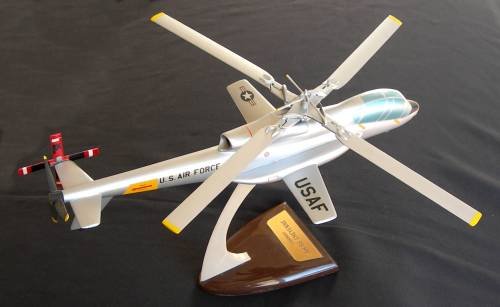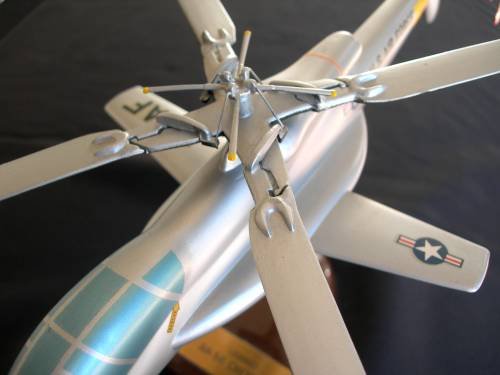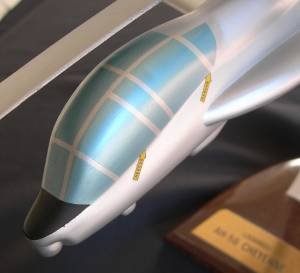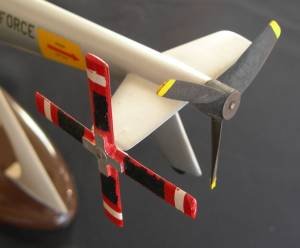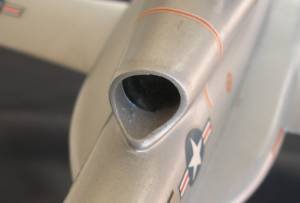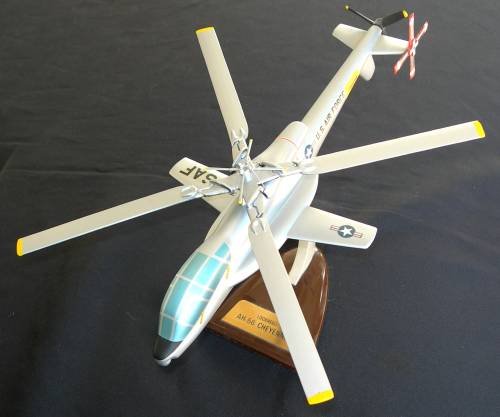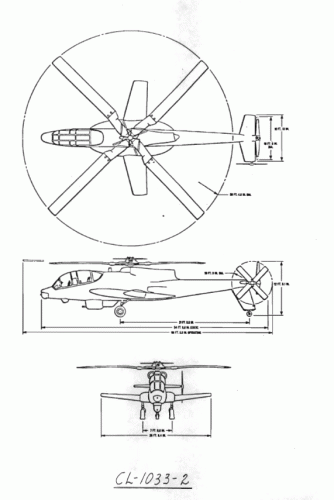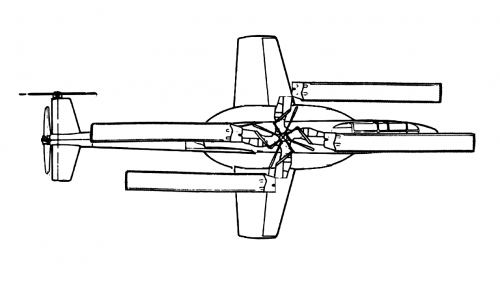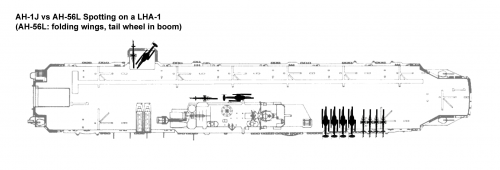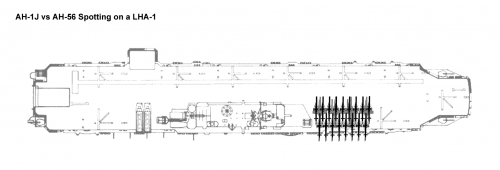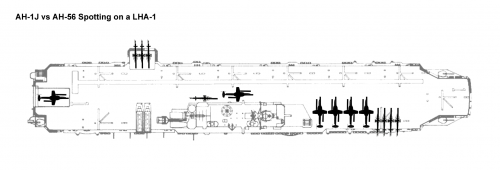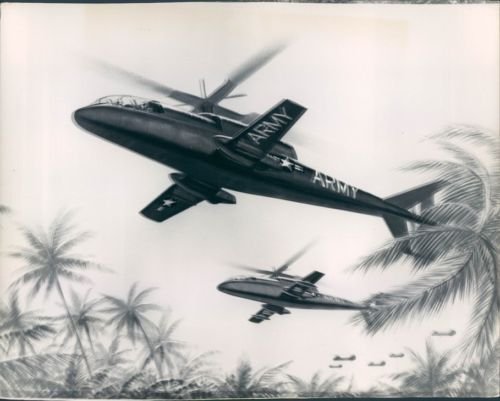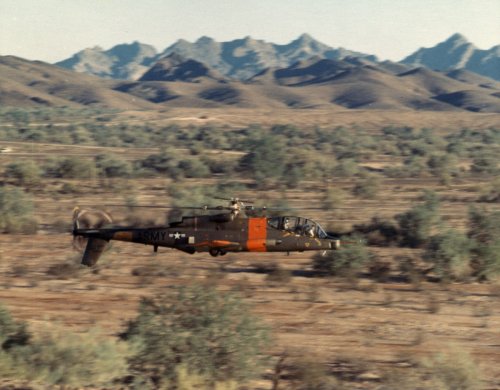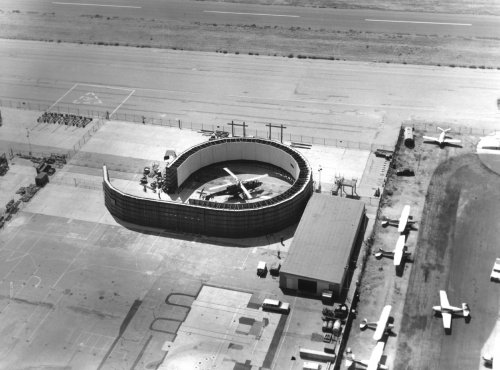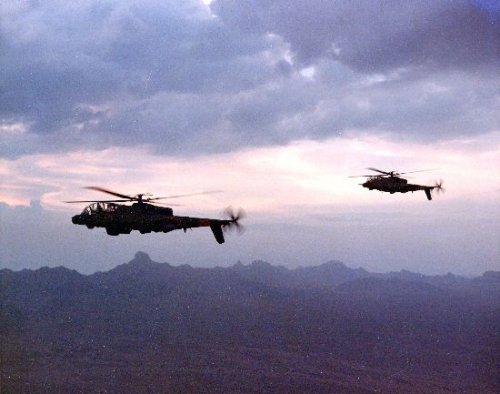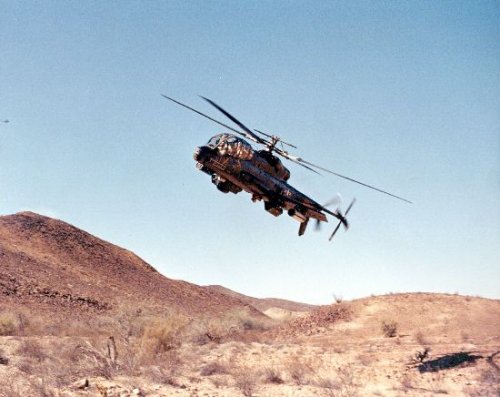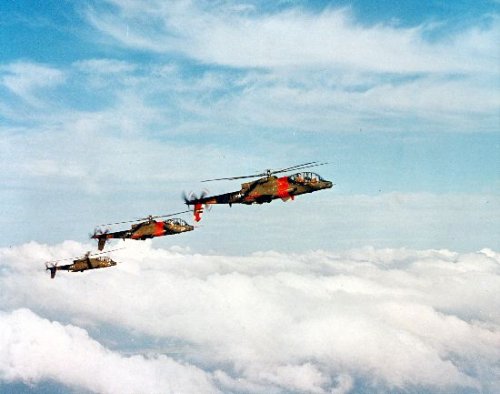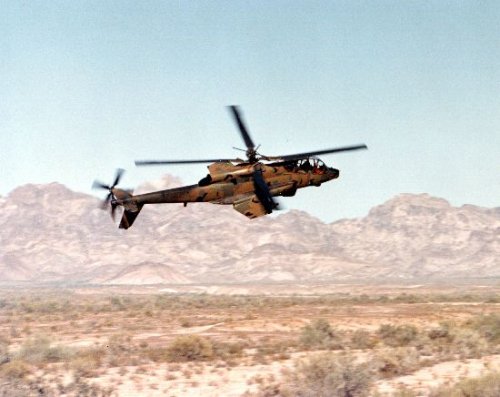You are using an out of date browser. It may not display this or other websites correctly.
You should upgrade or use an alternative browser.
You should upgrade or use an alternative browser.
Lockheed AH-56 Cheyenne and derivatives
- Thread starter Jemiba
- Start date
I think one is still at the US Army Aviation Museum at Ft. Rucker.
JohnR said:Just curious but does the AH-56 prototypes still exist, and if so is it/they still in flying condition?
Regards.
frank said:I think one is still at the US Army Aviation Museum at Ft. Rucker.
JohnR said:Just curious but does the AH-56 prototypes still exist, and if so is it/they still in flying condition?
Regards.
There's one at Campbell too, I believe next to a parking lot. The Rucker bird was in the Army Transportation Museum at Eustis for awhile too. I'm not sure of the current status of the airframes, but two Cheyennes were derelict in the boneyard at Aberdeen too (along with the Curtiss X-19, which is currently undergoing restoration).
- Joined
- 18 October 2006
- Messages
- 3,876
- Reaction score
- 3,729
Talos said:frank said:I think one is still at the US Army Aviation Museum at Ft. Rucker.
JohnR said:Just curious but does the AH-56 prototypes still exist, and if so is it/they still in flying condition?
Regards.
There's one at Campbell too, I believe next to a parking lot. The Rucker bird was in the Army Transportation Museum at Eustis for awhile too. I'm not sure of the current status of the airframes, but two Cheyennes were derelict in the boneyard at Aberdeen too (along with the Curtiss X-19, which is currently undergoing restoration).
The one at Rucker has been removed from display. Not sure what the status of it is. I suspecct it is going renovation.
Colonial-Marine
UAVs are now friend, drones are the real enemy.
- Joined
- 5 October 2009
- Messages
- 1,197
- Reaction score
- 707
I have been trying to look for information on the XM140 30mm cannon and ammunition used by the AH-56. I haven't had much luck when it comes to searching for the gun itself, do any books on the AH-56 provide details such as muzzle velocity, rate of fire, HE content, etc.?
Also, where were the maintainence hatches when it came to the mechanical components of the gunners "turret" setup?
Also, where were the maintainence hatches when it came to the mechanical components of the gunners "turret" setup?
Colonial-Marine said:I have been trying to look for information on the XM140 30mm cannon and ammunition used by the AH-56. I haven't had much luck when it comes to searching for the gun itself, do any books on the AH-56 provide details such as muzzle velocity, rate of fire, HE content, etc.?
From Anthony Williams' Rapid Fire:
XM140 WECOM
Gun weight: 63.5kg
Overall length: 154cm
Barrel length: 107cm
Powered action
Belt feed
Rate of fire: 405 rpm
Calibre: 30 x 100B
Rim Diameter: 34.5mm
Body diameter: 32.5mm
Muzzle velocity: 670 m/sec
Big blanks on filler weight and muzzle energy, sorry. It seems like only the cartridge is shorter, and the projectile would be the same as the Aden round--just like the 30x113 the M230 fires.
- Joined
- 13 June 2007
- Messages
- 2,029
- Reaction score
- 2,251
Greetings All -
Calls it a Huey but....
http://cgi.ebay.com/VINTAGE-DESK-MODEL-U-S-NAVY-HUEY-MILITARY-HELECOPTER-/220616653688?cmd=ViewItem&pt=LH_DefaultDomain_0&hash=item335dc6fb78
Enjoy the Day! Mark
Calls it a Huey but....
http://cgi.ebay.com/VINTAGE-DESK-MODEL-U-S-NAVY-HUEY-MILITARY-HELECOPTER-/220616653688?cmd=ViewItem&pt=LH_DefaultDomain_0&hash=item335dc6fb78
Enjoy the Day! Mark
- Joined
- 27 December 2005
- Messages
- 16,454
- Reaction score
- 19,154
Nice! A Navy AH-56 Comanche display model.
Saving images....
Saving images....
Attachments
-
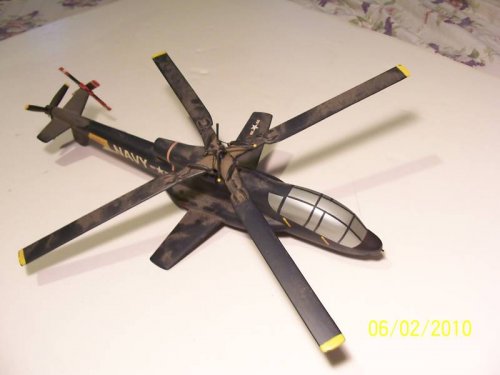 !Bu34fhwBWk~$(KGrHqR,!hwEv1+z)szkBMCI2z34lg~~_3.JPG31.5 KB · Views: 333
!Bu34fhwBWk~$(KGrHqR,!hwEv1+z)szkBMCI2z34lg~~_3.JPG31.5 KB · Views: 333 -
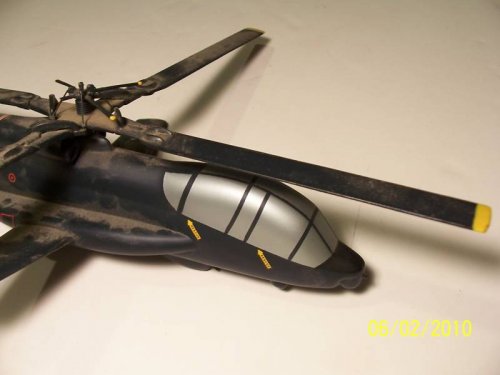 !Bu34g-!CGk~$(KGrHqJ,!iQEv1+0BTOpBMCI3!5sBQ~~_3.JPG30.7 KB · Views: 291
!Bu34g-!CGk~$(KGrHqJ,!iQEv1+0BTOpBMCI3!5sBQ~~_3.JPG30.7 KB · Views: 291 -
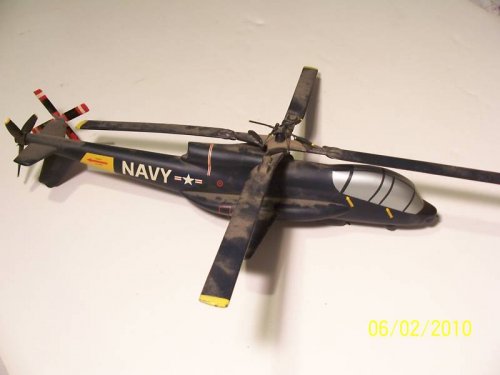 !Bu34gUQCGk~$(KGrHqV,!iUEv1+0E6H9BMCI26S9SQ~~_3.JPG27.1 KB · Views: 274
!Bu34gUQCGk~$(KGrHqV,!iUEv1+0E6H9BMCI26S9SQ~~_3.JPG27.1 KB · Views: 274 -
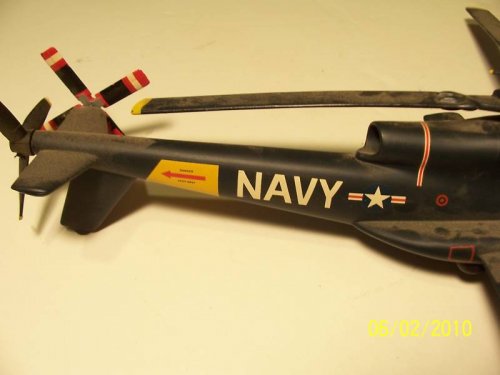 !Bu34hsw!2k~$(KGrHqJ,!h!Ev1+0DUPZBMCI3IQiqw~~_3.JPG29.7 KB · Views: 252
!Bu34hsw!2k~$(KGrHqJ,!h!Ev1+0DUPZBMCI3IQiqw~~_3.JPG29.7 KB · Views: 252 -
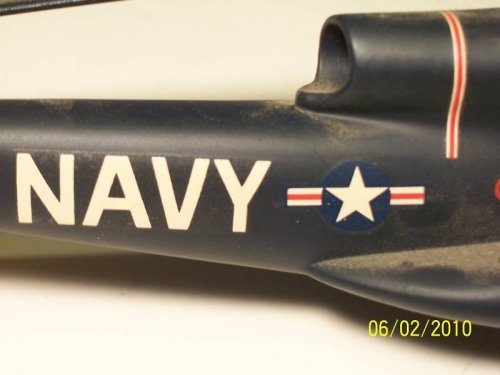 !Bu34ir!CGk~$(KGrHqR,!joEv1+0CNDIBMCI3QnMKQ~~_3.JPG32.9 KB · Views: 230
!Bu34ir!CGk~$(KGrHqR,!joEv1+0CNDIBMCI3QnMKQ~~_3.JPG32.9 KB · Views: 230
- Joined
- 27 December 2005
- Messages
- 16,454
- Reaction score
- 19,154
Last
Attachments
-
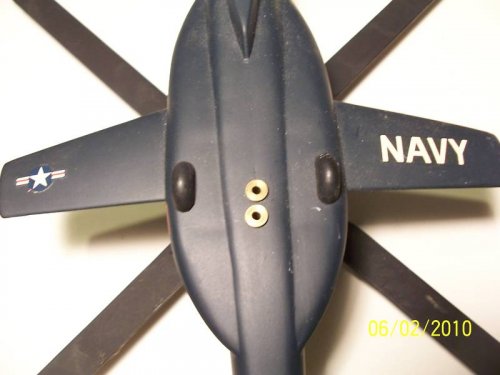 !Bu34p1gCGk~$(KGrHqN,!i8Ev1+0FFtKBMCI4Ot1-w~~_3.JPG35 KB · Views: 75
!Bu34p1gCGk~$(KGrHqN,!i8Ev1+0FFtKBMCI4Ot1-w~~_3.JPG35 KB · Views: 75 -
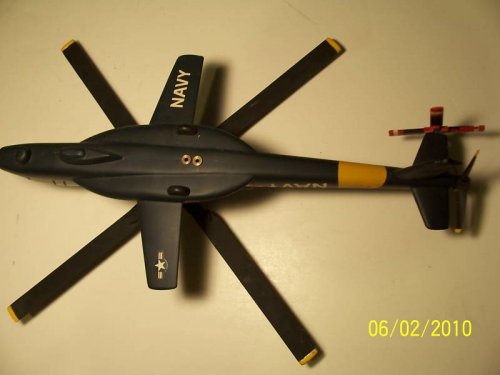 !Bu34omwBGk~$(KGrHqV,!h8Ev1+0Ey3+BMCI4Fu8IQ~~_3.JPG28 KB · Views: 80
!Bu34omwBGk~$(KGrHqV,!h8Ev1+0Ey3+BMCI4Fu8IQ~~_3.JPG28 KB · Views: 80 -
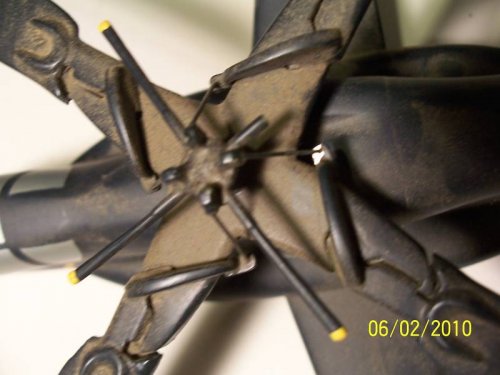 !Bu34mR!Bmk~$(KGrHqN,!g0Ev1+0B2CQBMCI30TSDg~~_3.JPG42.7 KB · Views: 84
!Bu34mR!Bmk~$(KGrHqN,!g0Ev1+0B2CQBMCI30TSDg~~_3.JPG42.7 KB · Views: 84 -
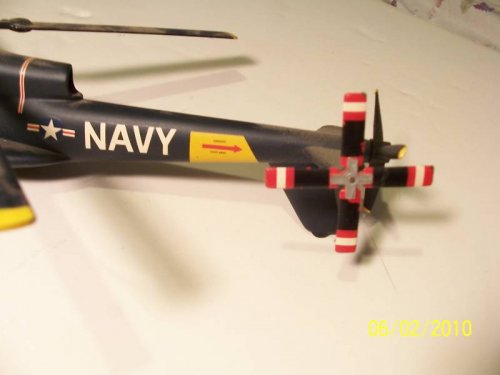 !Bu34lQ!!Wk~$(KGrHqJ,!hYEv1+z)UySBMCI3qOLr!~~_3.JPG24.9 KB · Views: 77
!Bu34lQ!!Wk~$(KGrHqJ,!hYEv1+z)UySBMCI3qOLr!~~_3.JPG24.9 KB · Views: 77 -
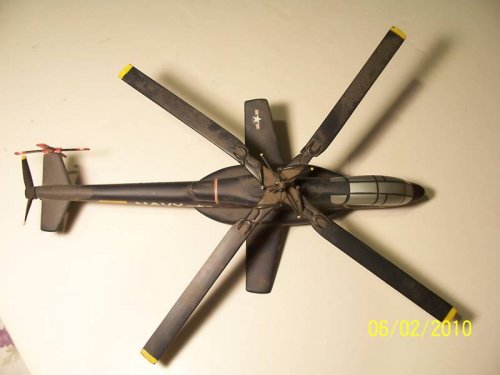 !Bu34jbQBGk~$(KGrHqF,!iMEv1+0!lutBMCI3YcpPg~~_3.JPG30.4 KB · Views: 92
!Bu34jbQBGk~$(KGrHqF,!iMEv1+0!lutBMCI3YcpPg~~_3.JPG30.4 KB · Views: 92
- Joined
- 27 December 2005
- Messages
- 16,454
- Reaction score
- 19,154
Added to topic now auction has ended.
Model of Lockheed AH-56 Cheyenne painted in United States Navy engine gray believed to be manufactured by Par Tool Co. Model Engineering Division. Would this variant have been named Sea Cheyenne?
Source: http://www.collectair.com/helicopterannex.html
Source: http://www.collectair.com/helicopterannex.html
Attachments
Model of Lockheed AH-56 Cheyenne painted with United States Air Force markings on display at Edwards Air Force Base believed to be manufactured by Par Tool Co. Model Engineering Division.
Source: http://www.collectair.com/helicopterannex.html
Source: http://www.collectair.com/helicopterannex.html
Attachments
Another model of Lockheed AH-56 Cheyenne painted silver with United States Air Force markings believed to be manufactured by Par Tool Co. Model Engineering Division.
Source: http://www.collectair.com/helicopterannex.html
Source: http://www.collectair.com/helicopterannex.html
Attachments
- Joined
- 13 August 2007
- Messages
- 7,149
- Reaction score
- 6,522
OMG Thanks for Picture
so A Navy version is for submarine-hunter
or for the U.S. Marine Corps ?
the USAF version certainly for Ground attack
but the question is as A-10 backup or rival ?
so A Navy version is for submarine-hunter
or for the U.S. Marine Corps ?
the USAF version certainly for Ground attack
but the question is as A-10 backup or rival ?
Is it Navy Blue or Engine Gray? I'd think gray more appropriate for the timeframe & it looks more gray to me.
Triton said:Model of Lockheed AH-56 Cheyenne painted in United States Navy blue believed to be manufactured by Par Tool Co. Model Engineering Division. Would this variant have been named Sea Cheyenne?
Source: http://www.collectair.com/helicopterannex.html
- Joined
- 13 June 2007
- Messages
- 2,029
- Reaction score
- 2,251
Nice finds Triton - I would think that it would have worked well with the USMC philosophy of self support. Not sure what the USAF would have used it for but if you're looking to sell airframes, painting models in potential customer's markings is the easy part!
Enjoy the Day! mark
Enjoy the Day! mark
Maybe a USAF AH-56 could've been used as an escort for HH-3s or HH-53s. I have a couple of AH-1Gs that I'm doing in both SEA camo & bare metal to be 'what-if' escorts as mentioned & have an old Aurora AH-56 that I wanted to do likewise. Might be more suitable than the ol' Skyraider.
Mark Nankivil said:Nice finds Triton - I would think that it would have worked well with the USMC philosophy of self support. Not sure what the USAF would have used it for but if you're looking to sell airframes, painting models in potential customer's markings is the easy part!
Enjoy the Day! mark
- Joined
- 14 June 2006
- Messages
- 2,297
- Reaction score
- 417
.Maybe a USAF AH-56 could've been used as an escort for HH-3s or HH-53s.
Actually a version of the AH-56 was conceived specifically for the USAF Combat SAR mission (not only to escort Jolly Green Giants). It had the CL-1033 TDN and four iterations: -1, fuselage extension of 33 inches, two T48-GE-16 engines; -2 basic AH-56 but revised gunner station; -3 24 inches fuselage extension and LLLTV; -4 as -2 but with 24 inches fuselage extension. Unfortunately, I only have the 3-views of -2, the least interesting iteration. So the depicted model with USAF insignia COULD well be a CL-1033-2.
Attachments
- Joined
- 16 April 2008
- Messages
- 8,398
- Reaction score
- 10,352
Michel Van said:OMG Thanks for Picture
so A Navy version is for submarine-hunter
or for the U.S. Marine Corps ?
A version for the US Marines would have been marked in USMC markings -- the USN does not generally operate helicopters for the Marines because the Marines have their own aviation capabilities.
The site that provided the pictures notes that the configuration was exactly the same as for the Army version. A Navy ASW version would obviously look very different (no gun, for example). If I had to guess, the model might have been meant to replace the very interim UH-1 gunships the Navy was fielding in its one light attack helicopter squadron, HA(L) 3, the Seawolves, which supported Navy special operations in Vietnam. If so, it would have been a very small procurement (a couple dozen at most), so it makes sense that it would be essentially a minimum-change version of the Army aircraft.
Colonial-Marine
UAVs are now friend, drones are the real enemy.
- Joined
- 5 October 2009
- Messages
- 1,197
- Reaction score
- 707
Obviously Lockheed was prepared to offer the USMC a version of the AH-56, but did the USMC themselves show any interest in the design or would funding other programs have been their priority?
- Joined
- 16 April 2008
- Messages
- 8,398
- Reaction score
- 10,352
Colonial-Marine said:Obviously Lockheed was prepared to offer the USMC a version of the AH-56, but did the USMC themselves show any interest in the design or would funding other programs have been their priority?
My understanding is that the Marines were not interested and were basically committed to the much less ambitious Twin Cobra/Sea Cobra (AH-1J and successors). In fact, after AH-56 was cancelled, the Army actually showed interest in the Twin Cobra before moving on to AAH (ultimately the AH-64 Apache).
The March 1967 issue of Popular Mechanics calls the winning AH-56 design the Lockheed Aphis. Is this an acronym or was the design named for the family of insects?
Source: Brown, Kevin V. "Aviation Jetstream" Popular Mechanics March 1967 p. 14.
Source: Brown, Kevin V. "Aviation Jetstream" Popular Mechanics March 1967 p. 14.
- Joined
- 18 October 2006
- Messages
- 3,876
- Reaction score
- 3,729
I would think that the size of the AH-56 would have been unattractive to the USMC because they do not stack like cord wood on the deck of an LHA or LHD. Rotor system would have needed a lot of creativity to fold up for the Marines as well.
- Joined
- 25 June 2009
- Messages
- 13,782
- Reaction score
- 3,062
Triton said:The March 1967 issue of Popular Mechanics calls the winning AH-56 design the Lockheed Aphis. Is this an acronym or was the design named for the family of insects?
Source: Brown, Kevin V. "Aviation Jetstream" Popular Mechanics March 1967 p. 14.
Now THAT's interesting. The Army usually allocated the name of Indian tribes to its rotorcraft. What you're saying here is that Lockheed may have had their own inhouse name for the design prior to that... and quite logically it wouldn't be "Cheyenne", which was an afterthought by the Army at a time when procurement was in the plans.
- Joined
- 18 March 2008
- Messages
- 3,532
- Reaction score
- 724
Dronte said:-Navy's combat rescue
-Twin engine
-Marines "twin pack" engine version
(source: Warbirdtech Series Volume 27-AH56 Cheyenne)
The only information about a USMC AH-56 is the single picture from the Warbirdtech attached in the above quoted post. Which is incorrectly labled as a “twin pack” version. The picture is of a standard AH-56 overflying some marching Marines in a Fjord with USMC painted on the side. The picture caption for the image has some conjecture about the USMC preferring twin pack engines and how such could easily be arranged (as detailed earlier in this thread as well).
As to folding rotors on an AH-56 in reality it would be quite easy despite the complexity of the hub. The rotor blades are simply bolted onto the hubs via two bearings outboard of all the hingeless stuff. Like many other similar helicopters it should be feasible for one bearing to be unbolted and the rotor swung inwards on the other bearing to fold the blades.
The biggest problem in spotting an AH-56 compared to an AH-1 would be the greater length and the higher span of the stub wings. But having wheels would certainly make manoeuvring them on the flight deck and in the hangar a lot easier.
- Joined
- 18 March 2008
- Messages
- 3,532
- Reaction score
- 724
A quick look at AH-56s with the rotor spun to the cardinal points and east/west rotors folded on one of their bearings (like the AH-1Z) compared to the AH-1J and both helicopters have about the same length but you can line up side by side six AH-1Js in space that would only take four AH-56s side by side. But the biggest problem with spotting AH-56s is the tail wheel. It is in the tail so you can't park the helo with the tails overhanging the deck sides. However even with the tail inside the flight deck the length of the AH-56 is comfortably within half of a LHA/LHD flight deck width so you can spot them and not interfere with flight operations on the takeoff/landing run.
- Joined
- 18 October 2006
- Messages
- 3,876
- Reaction score
- 3,729
Thanks Abraham on the rotor. Another factor may have been spotting the AH-56 next to the island although I doubt it. As you alude to the length of the aircraft might have been undesireable to the USMC for operations. It might also have been a center of gravity issue for the aircraft (USN does not like AH-64 on their decks cause they pip over to easy). I suspect complexity and cost were foremost the issue for the USMC who at that point were still into "hand-me-downs" and whatever funds the USN elected to throw thier way. While the AH-56 was fast, the AV-8 was faster, although warloads might have gone to the Cheyenne in the early days (pre-AV-8B). Not an expert here but I think AV-8 was the twinkle in the USMC eye at the time.
- Joined
- 18 March 2008
- Messages
- 3,532
- Reaction score
- 724
Have finished a ‘to scale’ flight deck picture of an LHA-1 with the AH-56 and AH-1J. From the graphical representation a few things become clear. Because of the tail wheel the AH-56 struggles to fit into the centreline aft elevator and can't be carried on the deck edge elevator (even if you manage to shoe horn it in at an angle). While this is not so bad on a LHD with limited elevator movements of aircraft it does make operations tougher. Also the width difference compared to AH-1J means nine Sea Cobras can be parked side by side for four AH-56As. They can also consume half the length thanks to overhang because if you spot the AH-1J’s skids right up against the deck edge. You can actually fit 17 AH-1Js in the space needed for four AH-56As if you take this to extremes.
However much of this spotting difference could be alleviated by moving the tail wheel forward (like on a Seahawk compared to a Black Hawk) and adding a wing fold to the AH-56. With such a “AH-56L” the difference between the two helos is minimal. Five AH-1Js fit into the space for four AH-56Ls and it can be spotted onto the deck edge elevator (at an uncomfortable angle) and between the flight deck and the island. The deck edge elevator problem would be alleviated by the wider LHD-1 ramps or a similar extension to the LHA-1.
As an aside the rotor hub of the AH-56 looks very much like a Swastika and I don’t mean the Hindu symbol of sunlight but the Nazi blood and guts version. Since the Israelis were so interested in the AH-56 would have created an interesting photo or strict censorship opportunity.
However much of this spotting difference could be alleviated by moving the tail wheel forward (like on a Seahawk compared to a Black Hawk) and adding a wing fold to the AH-56. With such a “AH-56L” the difference between the two helos is minimal. Five AH-1Js fit into the space for four AH-56Ls and it can be spotted onto the deck edge elevator (at an uncomfortable angle) and between the flight deck and the island. The deck edge elevator problem would be alleviated by the wider LHD-1 ramps or a similar extension to the LHA-1.
As an aside the rotor hub of the AH-56 looks very much like a Swastika and I don’t mean the Hindu symbol of sunlight but the Nazi blood and guts version. Since the Israelis were so interested in the AH-56 would have created an interesting photo or strict censorship opportunity.
Attachments
- Joined
- 13 June 2007
- Messages
- 2,029
- Reaction score
- 2,251
Greetings All -
On EPay....
http://cgi.ebay.com/1965-Lockheed-Aircraft-futuristic-illustrate-Wire-Photo-/170512190618?cmd=ViewItem&pt=LH_DefaultDomain_0&hash=item27b3518c9a
Enjoy the Day! Mark
On EPay....
http://cgi.ebay.com/1965-Lockheed-Aircraft-futuristic-illustrate-Wire-Photo-/170512190618?cmd=ViewItem&pt=LH_DefaultDomain_0&hash=item27b3518c9a
Enjoy the Day! Mark
Interesting that the artist's impression includes palm trees, was he or she implying use of the attack helicopter in Vietnam?
From Code One magazine:
Source: http://www.codeonemagazine.com/gallery_slideshow.html?item_id=19
The AH-56 Cheyenne attack helicopter on a very low level test mission. A total of 10 AH-56s were built. Although it never entered production, many of the technologies pioneered on the Cheyenne found use on other platforms. The AH-56 had a top speed of 253 mph at sea level.
To support ground testing of the AH-56 Cheyenne attack helicopter, Lockheed built this revetment at its Van Nuys, California, facility. Known as Fort Cheyenne, the structure was designed to contain the damage if one of the helicopter's rotor blades departed the aircraft during high-speed testing.
Source: http://www.codeonemagazine.com/gallery_slideshow.html?item_id=19
Attachments
Photographs of Lockheed AH-56A Cheyenne from San Diego Air and Space Museum Archive.
http://www.flickr.com/photos/sdasmarchives/4562032912/
http://www.flickr.com/photos/sdasmarchives/4561402591/
http://www.flickr.com/photos/sdasmarchives/4561403049/
http://www.flickr.com/photos/sdasmarchives/4561402657/
http://www.flickr.com/photos/sdasmarchives/4562032912/
http://www.flickr.com/photos/sdasmarchives/4561402591/
http://www.flickr.com/photos/sdasmarchives/4561403049/
http://www.flickr.com/photos/sdasmarchives/4561402657/
Attachments
- Joined
- 17 October 2006
- Messages
- 2,282
- Reaction score
- 607
"Aphis" sounds like a reporter's screw-up of Advanced Aerial Fire Support System (AAFSS).
LowObservable said:"Aphis" sounds like a reporter's screw-up of Advanced Aerial Fire Support System (AAFSS).
It certainly seems likely since I have not been able to find the Aphis name documented anywhere else.
Similar threads
-
AH-56 Cheyenne Experimental Attack Helicopter Group, Lockheed Engineer Estate
- Started by overscan (PaulMM)
- Replies: 1
-
AH-56 Cheyenne Military Helicopter Photograph & Concepts Photo
- Started by RAP
- Replies: 0
-
Various Lockheed helicopter projects
- Started by Archibald
- Replies: 72
-
Large Lot of Vintage 1970's HELICOPTER CHEYENNE AH-56 Photos + Reunion List
- Started by RAP
- Replies: 0
-
AAH Competition (AH-64 rivals)
- Started by overscan (PaulMM)
- Replies: 8

